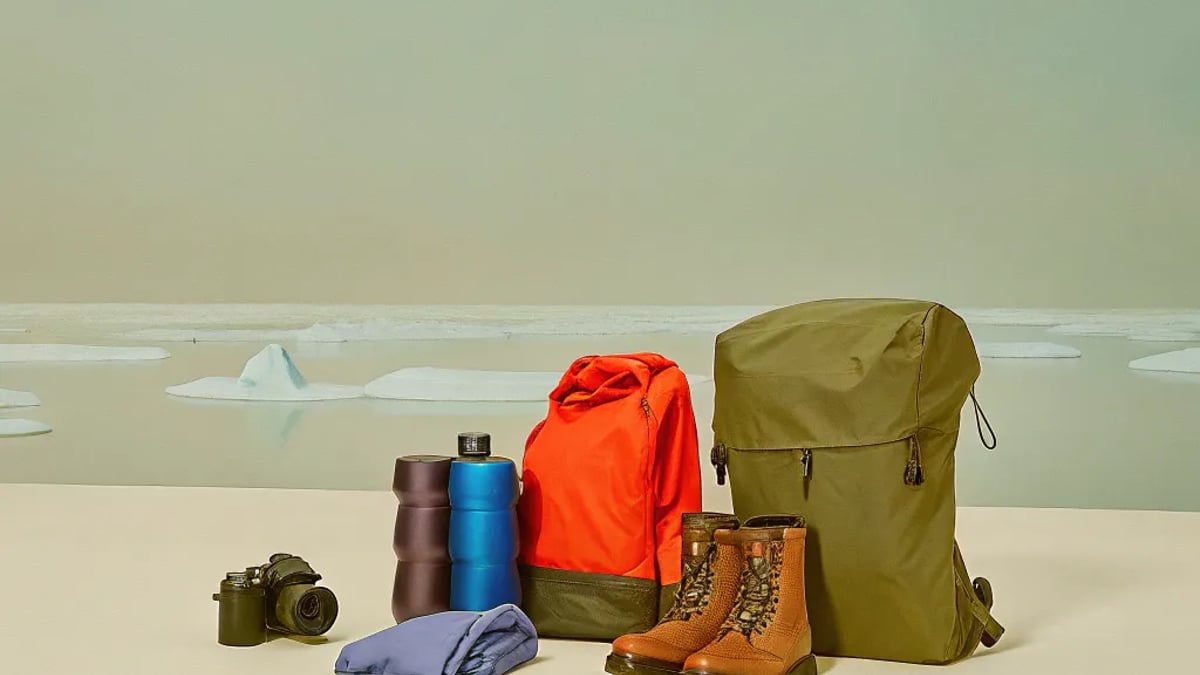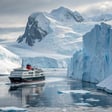
Preparing for an expedition cruise requires thoughtful planning and the right equipment. Whether you're heading to the icy landscapes of Antarctica, the wildlife-rich Arctic regions of Svalbard, or other remote destinations, having the proper gear can make or break your adventure. I recently returned from my second polar expedition, and I'm eager to share what I've learned about packing efficiently for these unique journeys.
Essential Clothing Layers for Extreme Environments
The key to comfort in polar regions is mastering the art of layering. Temperatures can fluctuate dramatically, and you'll move between the climate-controlled ship and harsh outdoor conditions multiple times daily.
Base Layers: Your First Defense
Your foundation layer is arguably the most important. Merino wool has become my go-to choice after experimenting with various materials. Unlike synthetic options I tried on my first expedition, merino naturally regulates temperature, wicks moisture, and—crucially—resists odor even after multiple wears.

Pack at least:
- 2-3 lightweight merino long-sleeve tops
- 2 pairs of merino leggings/long underwear
- 4-5 pairs of merino wool socks of varying thickness
I learned the hard way that cotton is absolutely useless in these environments—it gets damp and stays that way, which can be dangerous when temperatures drop. Last January in Antarctica, I made the mistake of wearing cotton socks during a particularly active landing and regretted it immediately.
Mid Layers: Insulation Is Key
The mid layer traps body heat while still allowing moisture to escape. Fleece and lightweight down or synthetic insulation work wonderfully here.
Consider bringing:
- 1-2 fleece jackets or pullovers (different weights if possible)
- 1 insulated vest for core warmth with arm mobility
- 1 pair of fleece or softshell pants
When I visited Svalbard last summer, I found myself constantly adjusting these mid layers as activity levels changed throughout excursions. Having options that zippered made quick adjustments much easier while photographing wildlife.
Outer Layers: Weather Protection
Your outer layer needs to shield you from wind, water, and snow. Most expedition cruises provide waterproof jackets and sometimes pants, but check with your specific operator.
If not provided, pack:
- Waterproof, breathable jacket with hood
- Waterproof pants that can fit over base and mid layers
- Insulated parka for extremely cold conditions
The Silversea expedition I joined provided excellent expedition jackets, but I still brought my own waterproof pants with reinforced knees which proved invaluable during wet landings and kneeling to photograph penguins.
Footwear for Various Conditions
Footwear deserves special attention as your feet will face challenging conditions from wet zodiac landings to icy terrain.
Expedition Boots
Most cruise operators provide waterproof rubber boots for landings, but confirm this before departure. If you need to bring your own, look for:
- Insulated waterproof boots rated for cold temperatures
- Good traction for slippery surfaces
- Height that covers at least mid-calf
- Room for thick socks
Ship and Casual Footwear
Don't forget about life onboard:
- Comfortable slip-on shoes for the ship
- Supportive walking shoes for port visits
- Flip-flops for shared shower facilities (if applicable)
During my Antarctica cruise, I was thankful for bringing lightweight, packable down booties for the ship. They kept my feet warm while taking minimal space in my luggage.
Accessories That Make or Break Your Experience
Small items often make the biggest difference in extreme environments.
Hand and Head Protection
Your extremities lose heat quickly in cold weather:
- Waterproof gloves (crucial for zodiac rides)
- Liner gloves for dexterity when taking photos
- Warm hat that covers ears
- Neck gaiter or buff (incredibly versatile)
- Polarized sunglasses with strap
I actually packed two different weight hats for my Arctic expedition – a lightweight beanie for active excursions and a heavier windproof option with ear flaps for zodiac cruising when the wind chill was fierce.
Personal Comfort Items
These small additions significantly improved my expedition experience:
- Hand and toe warmers for particularly cold days
- Lip balm with SPF (the polar sun is intense)
- Moisturizer for dry ship air
- Sunscreen (UV reflection from ice and water is powerful)
- Waterproof phone case or dry bag
How Should I Pack My Camera Gear?
Photography is often a highlight of expedition cruises, but camera equipment requires special consideration.
Essential Photography Equipment
- Weather-resistant camera body if possible
- Versatile zoom lens (something like 24-200mm)
- Extra batteries (cold depletes them faster)
- Memory cards with ample storage
- Lens cleaning supplies
- Waterproof camera bag or cover
During my Quark Expeditions Svalbard cruise, I noticed many passengers struggling with condensation on their lenses when moving between the warm ship and cold outdoors. I adopted the habit of sealing my camera in a ziplock bag before going inside, allowing it to warm up gradually without condensation forming.
What About Luggage and Organization?
Expedition ships have limited space, so choosing the right bags matters.
Luggage Considerations
- Soft-sided duffel bags store more easily in cabins
- Waterproof dry bags for excursions
- Compression packing cubes to maximize space
The Patagonia Black Hole Duffel has become popular among expedition travelers for good reason – it's durable, water-resistant, and collapses when not in use. I've seen these on every expedition ship I've boarded.
Why Do I Need Special Gear for Zodiac Cruising?
Zodiac boats (rigid inflatable boats) are the workhorses of expedition cruising, taking you from ship to shore and on wildlife viewing excursions.
Zodiac-Specific Considerations
- Waterproof backpack or day pack
- Quick-dry pants that can be tucked into boots
- Waterproof gloves that maintain dexterity
- Camera rain cover
- Binoculars with waterproof rating
The splashiest zodiac ride I experienced was off South Georgia Island, where we faced choppy conditions while approaching a massive king penguin colony. Those without waterproof covers for their cameras missed incredible shots.
What Unexpected Items Should I Pack?
Some items aren't obvious until you're on the expedition.
- Seasickness remedies (even if you don't normally need them)
- Reusable water bottle (many ships don't provide single-use plastics)
- Binoculars (essential for wildlife spotting)
- Swimsuit (for polar plunges or onboard hot tubs)
- Small backpack for landings
- Waterproof phone case
During rough seas crossing the Drake Passage, I noticed even experienced sailors reaching for seasickness remedies. Better to have them and not need them than vice versa.
How Do I Prepare for Varying Weather?
Expedition destinations can experience dramatic weather shifts, sometimes within hours.
The Arctic and Antarctica may seem similar, but they have distinct differences. Antarctica tends to be windier but sometimes milder than expected during its summer (November-February), while the Arctic can experience more rain and variable conditions during its season (June-September).
Check historical weather data for your specific destination and travel dates, but always prepare for conditions about 10-15 degrees colder than forecast, especially when considering wind chill factors on open water.
Do Expedition Ships Have Laundry Facilities?
Most expedition ships offer laundry services, but they can be expensive and sometimes unavailable during rough seas. I've found packing quick-dry fabrics and doing occasional sink washing with biodegradable soap helps extend my wardrobe without overpacking.
On my 18-day Antarctica cruise, I packed about 10 days' worth of clothes and washed essentials halfway through. This strategy saved significant luggage space that I used for camera equipment instead.
Final Thoughts on Expedition Packing
Packing for an expedition cruise differs significantly from traditional vacations or even standard cruises. The focus should be on practical, versatile items rather than variety or fashion. Remember that most of your fellow passengers will be in similar practical attire.
My expedition experiences have taught me that less is often more—except when it comes to layers and backup options for truly essential items. The memories and photographs you'll bring home from these remote regions will far outweigh any temporary discomfort from not having the perfect outfit for every occasion.
By focusing on quality gear that protects you from the elements, you'll be able to fully immerse yourself in the breathtaking landscapes and wildlife encounters that make expedition cruising such a transformative travel experience.
Tags

About Isabella Montgomery the Author
With over 15 years of experience charting the world's most remote waters, Isabella Montgomery is a seasoned explorer and a leading voice in expedition-cruises, blending her nautical expertise with a passion for discovering untouched landscapes and diverse cultures.
Recommended Articles
Outdoor Trail Cameras for Capturing Nature Up Close
Discover the best outdoor trail cameras for capturing wildlife without disturbing their habitats. Tips for selection and setup included.
How to Choose the Right Adjustable Bed This Black Friday
Discover how to choose the best adjustable bed this Black Friday with key factors like comfort, pricing, and features for a better sleep experience.
The Best Everyday Gadgets People Can’t Stop Using in 2025
Discover the must-have gadgets for 2025 that enhance convenience and connectivity in daily life, from smart home devices to fitness trackers.
The Expedition Cruises Taking Travelers to Places Planes Can’t Reach
Explore the allure of expedition cruises to remote destinations where planes can't reach, offering unforgettable adventures and unique experiences.
What Everyone Should Know About Amyloidosis in 2025
Discover essential insights about amyloidosis in 2025, including types, treatments, and the importance of awareness for improved patient outcomes.




